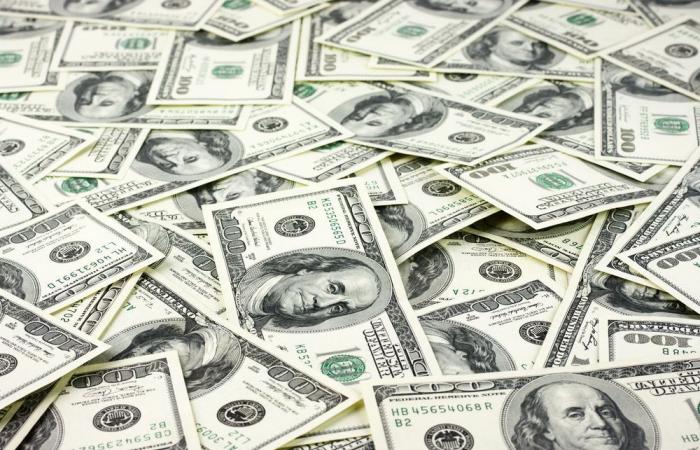Eight decades of dollar history can be read as a play in three acts.
Event andIt was Eurodollar, offshore bank deposits that appeared in the 1950s in London so that the Soviet block, European exporters and, in the long term, all multinationals can hold dollars outside of American regulations, thus giving birth to a parallel banking base of several billion dollars.
Acts IIPetrodollar was the name of OPEC. After 1974, OPEC’s decision to set the price of crude in dollars attached global energy demand to the American currency and gave Washington automatic access to its treasury bills.
John Devadoss will appear in the “Symposium for the Research of Consensus Ieee X: What is the next step in the agentic AI?” At consensus 2025 on May 16 from 11 a.m. to 12:30 p.m.
Acta 3Currently takes place. The stabledollars (also called stablecoins) backed by the US dollar (USD)-on-chain chips entirely guaranteed by treasury and liquidity-have exceeded $ 230 billion in circulation and, over several days, their value is greater than that of Paypal and Western Union combined. The dollar has reinvented itself, this time in the form of aMonetary API: a programmable unit without authorization which fades in a few seconds for a fraction of a penny.
Social networks Incitations and the future is emerging. A Lagos merchant can accept USDC on his phone, avoid a 20 % shift in Naira and reconstruct her stocks the same afternoon. A Singaporean designer fund places its liquidity in trunk token treasury vouchers with a yield of 4.9 %, then transferred these dollars to a swap at 8 am, new York time, without corresponding bank. A Colombian self-employed worker converts his wages from the weekend to digital dollars, bypassing capital checks and withdraws pesos from an automatic distributor of neighborhood tickets-without gap from Friday to Monday, or transfer fees of 7 %.
The Stablecoins have not replaced the banking system; They bypassed its slowest and most expensive strangulation points.
The scale generates legitimacy. Coal Genius the Adoption of the Bill by the US Senate would allow stable -co -emitters to be authorized nationally and, for the first time, to access the main accounts of the Fed. The Treasury already provides a floating of $ 2,000 billion in stablecoins by 2028, an amount comparable to that of all Eurodollars in the early 1990s.
-This projection is plausible: Tether and Circle hold more than 90 % of the shares, their reserves being almost entirely made up of short -term American debt, which means that foreigners de facto hold digitized treasury bills, payable in 30 seconds. The dollar network effect migrates Swift messages to calls for smart contracts, thus extending its hegemony without printing a single new ticket.
However, the stabledollar era is not a risk -free triumph. Private tokens that envelop the sovereign currency raise complex questions. Who leads monetary legal when a third of the offshore floating lies in smart contracts? What recourse is a Venezuelan family has if a transmitter puts its portfolio on a blacklist? Europe-or the BRICS-will they tolerate dependence comparable to that of rails with an asset regulated by the United States? These are governance puzzles, but they can be resolved if political decision -makers treat stablecoins as an essential infrastructure of the dollar, not as speculative irritants.
The action plan is simple:
- Impose Basel-des rules of the “capital and liquidity” type for issuers.
- Publish certificates of reserves in real time on the chainThe guarantees are therefore transparent by default.
- Make interoperability between blockchains compulsory to prevent the winner from taking care of everything.
- Extend FDIC type insurance to token deposits so that end users benefit from the same safety net as with bank accounts.
By doing so, the United States would create a wider digital ditch than that of CBDCs of any competitor, including those of China. An uprusting of shoulders would lead to the migration of emissions abroad, leaving Washington to monitor a parallel system which he no longer controls.
The hegemony of the dollar has always progressed by clinging to the dominant commercial flow of the time: the Eurodollars financed the post-war reconstruction; The petrodollars have lubricated the century of fossil fuels; The stabledollars have the economy at high speed, eaten away by software.
In ten years, you won’t do it. seeThey will simply be the water in which we will swim. Your local coffee will indicate prices in pesos or books, but the regulations will be made in token dollars. The brokers will sell “tickets”, which are actually programmable bearer instruments for guarantee calls. Salaries will arrive in a portfolio that will automatically send savings, investments and charity donations upon receipt.
The only question that remains open is whether the United States will be able to manage the modernization they have caused by accident. Stablecoins are already the class of almost sovereign assets which is experiencing the fastest growth. Use them with strict rules and the third major dollar reinvention will be written by itself. Ignore them, and this future will be achieved, but without the United States in charge.








